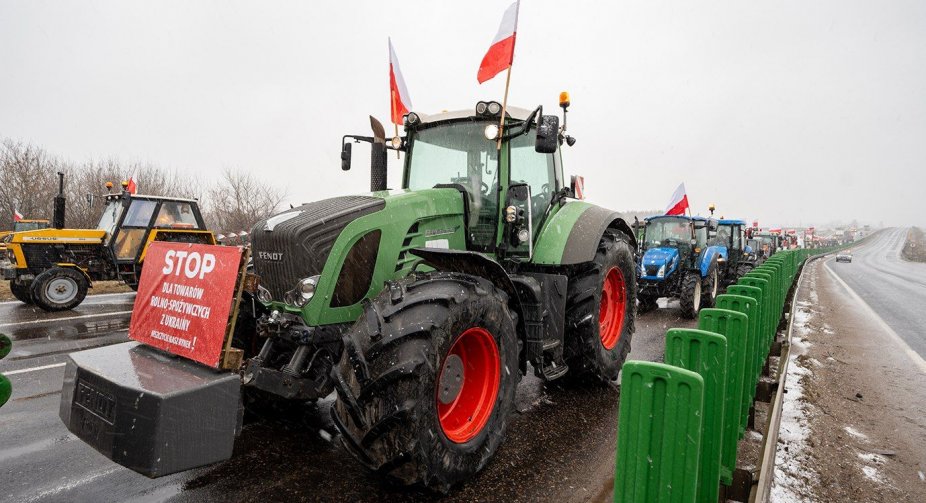The blockade continues at six Ukrainian-Polish checkpoints, with protesters, Polish farmers, allowing one or two trucks to pass in both directions per hour, which has increased the load on checkpoints with other countries, where traffic flows have been redirected, said Andriy Demchenko, spokesman for the State Border Guard Service of Ukraine, during a telethon.
According to him, the most difficult situation is at the Yagodyn-Dorogusk and Shehyni-Medyka checkpoints, where protesters do not allow freight vehicles heading from Ukraine to Poland to pass at all.
"Yesterday the situation was different, because Polish farmers scaled up their actions to block traffic for vehicles. They made it virtually impossible for trucks to move in all directions, and at the three checkpoints Ustyluh-Zosin, Uhryniv-Dovhobochiv, and Rava-Ruska-Hrebenne they restricted traffic for other categories of vehicles, including cars and buses, which for some time could not cross the border either towards Ukraine or Poland. Gradually, after 4 p.m., until 6 p.m., traffic in these directions for cars and buses returned to normal," Demchenko said.
He also said that on Wednesday, cars and buses pass through the blocked checkpoints without any problems.
The total number of blocked trucks in the queues at the border has reached more than 2,500, the SBGS spokesman said.
Demchenko noted that the checkpoints with other countries are operating normally, but due to the fact that drivers choose them as an alternative to Polish crossings, the load is increasing. In particular, he said, this is evident in the situation on the borders of Slovakia and Hungary.
"While a few weeks ago there were no queues, as of this morning, there are about 600 trucks in the queues in Slovakia opposite the Uzhhorod-Vysne Nemecke checkpoint. In Hungary, about 750 vehicles are waiting to cross the border opposite the Tisa checkpoint (Chop-Záhony)," said Demchenko.
He emphasized that the traffic intensity at these checkpoints corresponds to the capacity of each of them.






